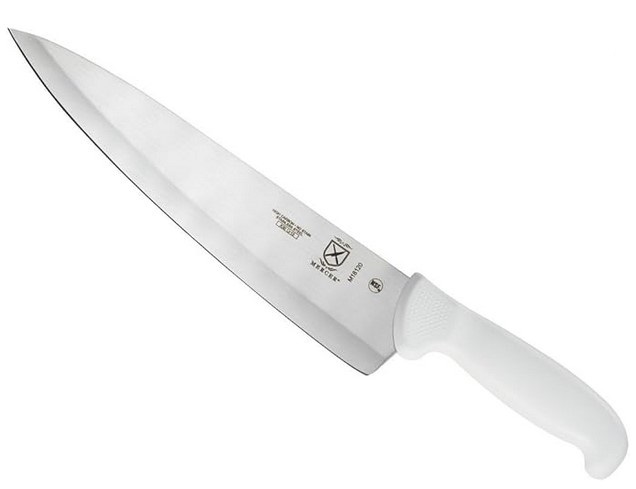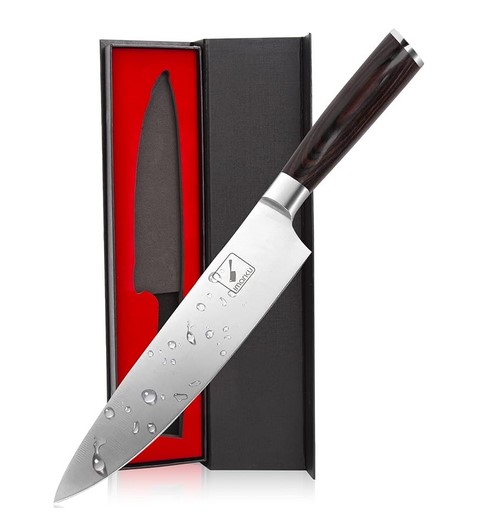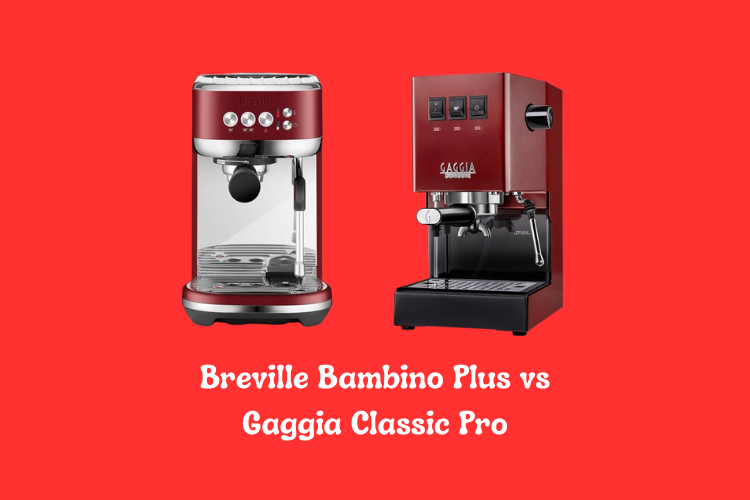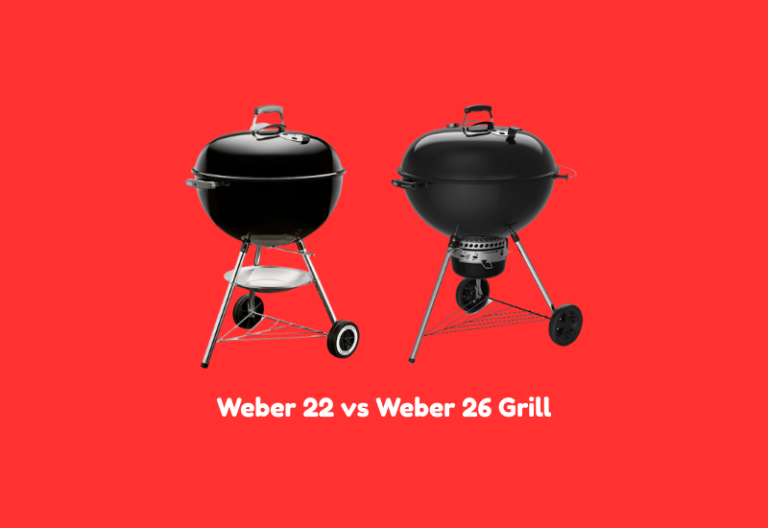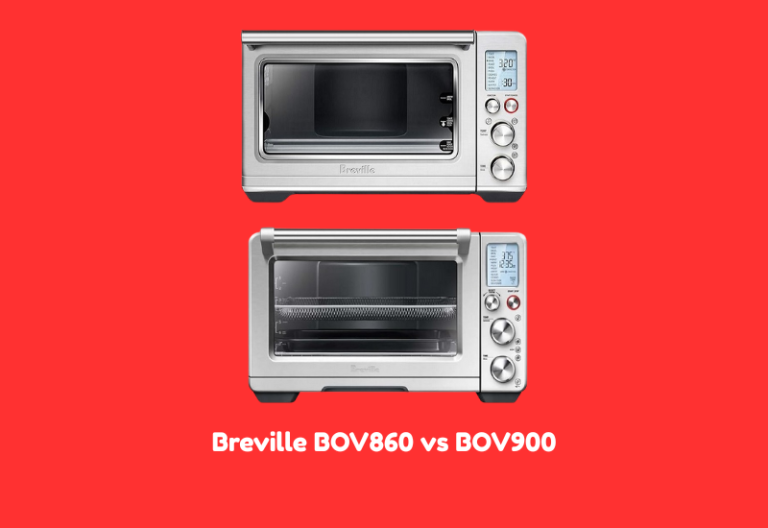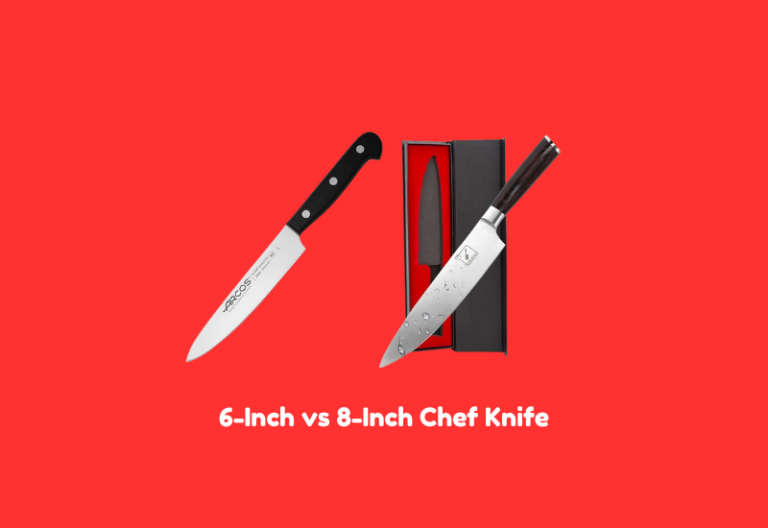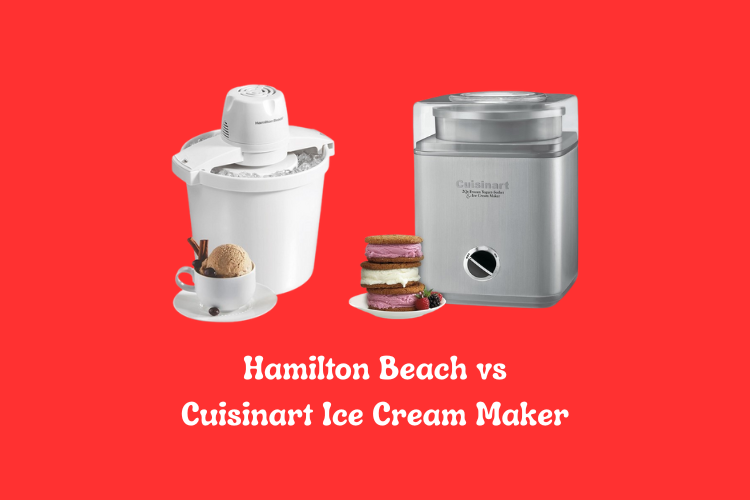10-Inch vs 8-Inch Chef Knife – Which One Slices Ahead?
A great chef knife feels like an extension of your hand. Size plays a big role in how a knife handles daily kitchen tasks. Two of the most common blade lengths 10 inches and 8 inches offer different benefits for home cooks and professionals.
The 10-inch knife delivers extra reach, power, and speed. It tackles large vegetables, whole cuts of meat, and bulk prep work with ease.
On the other hand, the 8-inch knife provides more control, precision, and balance for smaller hands or tighter spaces. Both sizes shine in different ways, and the right pick depends on comfort, cooking style, and prep volume.
This comparison breaks down key differences in performance, weight, versatility, and comfort so you can make a smart decision for your kitchen. Grab your cutting board, because it’s time to see which blade comes out on top.
10-Inch vs 8-Inch Chef Knife
Chef knives come in different sizes. Two of the most popular are the 10-inch and the 8-inch versions. They may look similar, but they work differently in the kitchen. The length, weight, and balance of each knife can affect how you cut, chop, and slice.
A 10-inch knife covers more surface and works well for big items like melons or cabbages. An 8-inch knife gives more control and is easier to handle, especially for smaller hands.
Each one has its place, and choosing the right one depends on what you cook and how you like to work. This guide compares two chef knives. One is a 10-inch knife from the Mercer Culinary Ultimate White Series.
The other is an 8-inch gyutou knife made of high-carbon stainless steel with a pakka wood handle. You will see their details, features, strengths, and weaknesses. By the end, you will know which knife suits your needs better.
Mercer Culinary 10 Ultimate Chef’s Knife
This 10-inch knife is part of the Mercer Culinary Ultimate White Series. It is made with high-carbon Japanese steel. The blade stays sharp and is easy to take care of.
The handle is built with textured finger points for a strong, safe grip. The knife is best for chopping, mincing, and slicing.
It can handle everything from onions to garlic and cabbage. It is made for both home cooks and professional chefs.
Features
-
High-carbon Japanese steel blade
-
Ergonomic handle with textured grip
-
Non-slip handle for safety and comfort
-
Sharp edge that lasts long
-
Easy to wash by hand
-
Made for mincing, dicing, chopping, and slicing
-
Strong construction for daily use
What is the good?
This knife gives great reach and speed. The longer blade cuts more at once. You can slice big foods like watermelon, pumpkin, or large meat cuts without much effort. The grip feels firm, even with wet hands. The weight is well-balanced, so it doesn’t feel heavy at the tip.
The sharp edge makes every chop clean. You don’t need much force. It also holds its edge longer than many other knives in this price range. The handle gives comfort, even during long chopping sessions.
What is the bad?
The size can feel bulky. Small hands may struggle to hold or control it. Cutting small fruits or herbs might feel awkward. It also needs hand washing.
Leaving it in water or placing it in the dishwasher can damage the blade and handle. Some people may find the knife too long for tight spaces or small cutting boards.
Overall Opinion
This 10-inch knife is powerful and fast. It works well for large batches and big ingredients. Home chefs who prep in bulk or love large veggies will enjoy this knife. It may feel too much for quick daily meals or those with small hands, but for large cutting jobs, it handles the work with ease.
imarku 8 Inch Home Essentials Chef Knife
This 8-inch gyutou knife is made with high-carbon stainless steel. It includes 0.6 to 0.75% carbon, making it twice as hard as many other knives. It works as a multipurpose knife.
You can cut meat, vegetables, and even separate bones. The Rockwell hardness score is between 56 and 58, which makes it tough and durable.
The handle is made of pakka wood. It feels stable and reduces hand pain during long use. The blade edge stays sharp and cuts through thick items easily. The added chrome gives the knife a shiny look and protects it from rust.
Features
-
High-carbon stainless steel blade (0.6–0.75% carbon)
-
HRC 56–58 Rockwell hardness
-
Ergonomic pakka wood handle
-
Ultra-sharp edge
-
Multi-functional design
-
Rust-resistant with chrome
-
Designed using Japanese knife engineering
What is the good?
This knife brings balance and control. The 8-inch length fits well in hand. It slices onions, garlic, and meat with ease. The weight is light, but the blade stays firm. The pakka wood handle feels soft but holds strong.
It stays sharp through long use and cuts clean with little effort. The shine doesn’t fade, even after daily use. The edge handles hard vegetables and meat without bending or dulling quickly.
What is the bad?
It might feel short when cutting large items. Big cuts of meat or full heads of cabbage may take more time. The sharpness is great at first, but frequent use may need re-sharpening sooner than expected.
The handle is smooth, so it may not grip well with wet hands. Though stylish, it may not feel as safe during fast chopping in a busy kitchen.
Overall Opinion
This 8-inch knife gives comfort, balance, and solid cutting power. It’s great for home cooks who need a reliable knife for daily use. It handles most kitchen jobs and feels good in hand. For someone who wants control and ease, this knife fits well.
Details Comparison for 10-Inch vs 8-Inch Chef Knife
The 10-inch knife is stronger for big jobs. It gives more cutting space and finishes large tasks faster. The high-carbon Japanese steel makes the blade long-lasting and sharp.
Its non-slip handle adds safety, which is useful during long prep work. Still, the large size may feel awkward for beginners or small hands.
The 8-inch gyutou knife focuses on balance and control. Its blade is hard and sharp, with added carbon and chrome for strength and shine. The pakka handle gives comfort but may lack grip when wet.
It’s easier to manage in tight spaces and good for fast slicing and dicing. The 10-inch knife feels professional and powerful. The 8-inch knife feels smooth and simple.
One suits big jobs and long prep. The other fits daily cooking and detailed work. Both are sharp, durable, and well-designed, but your choice depends on your comfort and cutting needs.
FAQs
Is a 10-inch chef knife too big for home use?
Not always. It works well for big tasks like slicing melons or large meat cuts. But it may feel hard to handle for small kitchens or beginners.
Which knife is better for beginners?
The 8-inch knife is easier to control. It’s lighter and more comfortable for most people, especially those with smaller hands.
Do both knives need hand washing?
Yes. Washing by hand helps protect the blade and handle. Dishwashers or soaking in water can damage them.
What kind of foods does each knife handle best?
The 10-inch knife works well for large or thick foods. The 8-inch knife is better for small to medium-sized tasks like cutting vegetables, slicing meat, or chopping herbs.
Which knife holds sharpness longer?
Both have sharp edges, but the 10-inch Mercer knife has a slight edge in edge retention. The 8-inch knife might need sharpening more often with heavy use.
Conclusion
A chef knife is one of the most important tools in the kitchen. The right size can make cooking easier and faster. The 10-inch knife offers reach, power, and speed. The 8-inch knife gives balance, comfort, and control.
Pick the 10-inch knife if you often cook big meals or work with large ingredients. Pick the 8-inch knife if you want something lighter, easier to control, and more suitable for everyday cooking.
Both knives are sharp, strong, and well-designed. Think about your kitchen tasks, hand size, and cutting style before choosing. The right knife will save you time and give better results in every dish.

